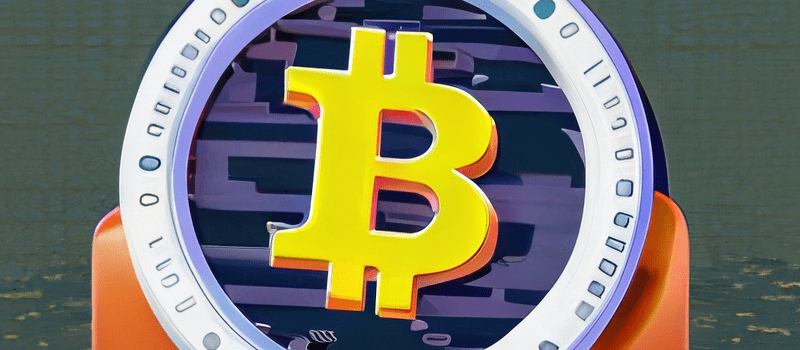Blockchain Swift: Journey into Interoperability and Payment Security

Welcome to the fascinating world of blockchain technology, where innovation knows no bounds. In this article, we delve into the remarkable journey of Swift, the global provider of secure financial messaging services, as it ventures into blockchain interoperability and payment security.
As a professional in the field, I am excited to share with you the groundbreaking developments and advancements Swift has made in this space. From enhancing cross-border transactions to ensuring utmost security, Swift’s foray into blockchain technology promises to revolutionize how we conduct financial transactions.
So, join me as we explore the captivating story of Swift’s journey into blockchain interoperability and payment security, and discover the endless possibilities.
Introduction
Blockchain technology has emerged in recent years as having major potential to transform financial services. Blockchain is essentially a decentralized, distributed digital ledger that records transactions transparently and securely.
Some key features of blockchain include:
- Decentralized network with no central authority
- Cryptographic validation of transactions
- Immutable record of all transactions
- Enhanced transparency and auditability
Blockchain has generated considerable excitement for its ability to streamline cross-border payments and settlement, among other fintech applications.
“Distributed ledger technology (DLT) could help banks and corporates enhance many different types of transaction processes including cross-border payments, trade finance, securities settlement and regulatory compliance.” [SWIFT website]
A critical player in evaluating blockchain’s promise is the Society for Worldwide Interbank Financial Telecommunication (SWIFT). SWIFT operates a messaging network that connects over 11,000 financial institutions globally and enables the secure transmission of payment orders and other financial messages.
In this article, we examine SWIFT’s exploration of blockchain technology and its potential impacts on the future of finance.
SWIFT’s Exploration of Blockchain Technology
SWIFT first announced in 2016 that it would begin experimenting with blockchain’s potential to enhance its messaging services and reduce friction in cross-border payments.
“SWIFT intends to leverage its unique set of capabilities to deliver a distributed ledger platform that enhances the corda platform.” [SWIFT website]
Since then, SWIFT has made steady progress in researching, developing and testing blockchain capabilities:
- 2017 – SWIFT conducts early proof-of-concept trials focused on nostro account reconciliation.
- 2018 – SWIFT launches a DLT sandbox environment for members to simulate transactions.
- 2020 – SWIFT pilots a voting solution for cooperative banks using R3’s Corda.
- 2021 – SWIFT trials a commercial paper transaction with tokenized assets.
SWIFT has focused its blockchain efforts on a few key areas:
- Tokenizing assets – representing assets like bonds and equity on blockchain
- Interoperability – enabling connectivity between different distributed ledgers
- Smart contracts – automating multi-party transactions through code
These innovations could help optimize efficiency, reduce risk, and improve transparency in financial transactions.
Recent Developments in SWIFT’s Blockchain Efforts
In 2022 and 2023, SWIFT has ramped up its blockchain efforts through new collaborations and plans for live pilots. This signals that SWIFT is moving closer to integrating blockchain technology into its global financial messaging network.
Some notable recent developments include:
-
Partnership with Chainlink – In June 2022, SWIFT announced it would work with blockchain oracle network Chainlink to provide tamper-proof connectivity between SWIFT and multiple blockchains.
“Our new collaboration with Chainlink Labs will be instrumental in ensuring a successful transition from our internal DLT sandbox to live platforms” [SWIFT Press Release]
-
Live pilot testing – SWIFT plans to run one of its first live pilots of blockchain technology in transactions by year-end 2022.
“SWIFT will leverage R3’s Corda blockchain for its upcoming live pilot of SWIFT services” [Coindesk]
-
Expanding scope – SWIFT aims to connect over a dozen financial institutions to blockchain networks through these pilots. The initial use case is cross-border payments.
Together, these moves indicate SWIFT is ramping up its blockchain integration efforts and inching closer to rollout.
Potential Benefits of Blockchain Integration
If SWIFT can successfully integrate blockchain technology into its messaging network, it could unlock various benefits and efficiencies for cross-border payments and settlements.
Potential advantages include:
-
Faster settlement times – Blockchain enables near real-time settlement by circumventing lengthy intermediary steps.
“Settlement time could be reduced from days to minutes by using DLT for reconciliation and record-keeping.” [SWIFT website]
-
Lower costs – By automating reconciliation through smart contracts, blockchain can reduce labor costs and fees.
-
Enhanced transparency – All participants can view transaction histories on a shared immutable ledger.
-
Reduced counterparty risk – Simultaneous swap of tokenized assets mitigates settlement risk.
-
Improved resiliency – Decentralized networks have no single point of failure.
-
Automated compliance – Smart contracts enable real-time regulatory checks.
By realizing these benefits at scale, blockchain integration could bring significant optimization to global financial markets.
Challenges and Open Questions
While blockchain integration offers tantalizing benefits, SWIFT and the financial industry still face some challenges and open questions:
-
Scalability – Can blockchain networks handle the immense transaction volumes of financial systems?
“Scalability remains a challenge across DLT systems.” [Forbes]
-
Interoperability – Enabling connectivity between different blockchains is still a work in progress.
-
Regulation – Comprehensive regulations are needed to govern asset tokenization and smart contracts.
“The lack of regulatory clarity remains a barrier to enterprise adoption of blockchain.” [Coindesk]
-
Legacy systems – Integrating and transitioning decades-old financial systems poses technology and execution risks. SWIFT must maintain existing messaging during any blockchain integration.
-
Industry coordination – Successfully optimizing complex global payment ecosystems requires alignment among diverse stakeholders.
As SWIFT experiments further, it will need to demonstrate blockchain’s ability to overcome these hurdles at scale.
The Future of Blockchain at SWIFT
Based on its progress to date with blockchain pilots and trials, SWIFT appears poised to continue expanding its integration efforts:
-
More testing – SWIFT will likely run additional pilots across an increasing range of transaction types and participants.
“SWIFT will continue testing DLT solutions before determining if and how they could improve existing services.” [Finextra]
-
Production systems – If pilots succeed, SWIFT could potentially build out and launch blockchain capabilities into its production systems and offerings.
-
Hybrid model – One possibility is integrating blockchain to complement SWIFT’s traditional messaging services.
“SWIFT aims to leverage the best of today’s technology while also taking advantage of DLT development.” [SWIFT Website]
Widespread adoption of blockchain by SWIFT could significantly accelerate broader adoption across finance. However, SWIFT is likely to take an incremental approach based on results of ongoing testing.
Conclusion
In summary, SWIFT has made meaningful progress in exploring blockchain technology over the past few years through partnerships, trials, and pilot testing focused on key applications like asset tokenization and smart contracts.
Recent moves to collaborate with Chainlink and pilot live implementations signal that SWIFT aims to advance its blockchain integration efforts.
If validated through further testing, blockchain could potentially unlock significant improvements in the efficiency, speed, transparency and resilience of cross-border payments and financial messaging.
However, real-world adoption at scale still faces challenges around scalability, regulation, interoperability, and transitioning legacy systems.
“SWIFT will continue to cautiously analyze, explore and test DLT while also pushing forward with more immediate technology priorities.” [Coindesk]
There is justified optimism that blockchain can transform global finance as SWIFT envisions, but the path forward will likely be gradual based on measured technical validation. By leveraging its scale and central position in finance, SWIFT can play a pivotal role in catalyzing blockchain adoption across the industry if its innovation efforts succeed.






Responses